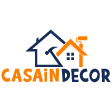When experts wrote about workplace design trends in prior years, they focused on improving employee well-being and efficiency. Learn more about what offices look like today.
Spurred by the modern working world trend, there’s a trend that businesses cannot afford to leave anything to chance if they wish to create an environment of happiness. And science backs up this claim.
Employee health and efficiency are still essential in 2021, in line with pandemic-era workplace norms. However, our anticipated workplace design concepts for this year have shifted dramatically. In workplace design in the COVID-19 age, keeping workers safe from health hazards is the main priority. Read on to dive into these trends.
Table of Contents
The Changes in Layout
The epidemic has changed how workers and businesses approach workplace design. While many workplaces have interim precautions to protect health and safety, significant long-term improvements will endure long after the pandemic concerns have subsided.
Over the last year, more individuals have become aware of the importance of health and safety in preserving their well-being. A year of wearing masks, regular handwashing, and social distance changed our perceptions of workplace safety and cleanliness. Today, people are more careful and deliberate to keep themselves and their colleagues healthy.
Some tactics businesses are changing their office layouts are as follows:
- Workstation pods. While plastic shields keep things clean, they might be harmful to cooperation and teamwork. Many businesses utilize desk pods to promote both safety and collaboration. Desk pods enable three to four employees to interact while yet maintaining distance.
- Physical distancing at the desk. Leaders need to speak to their workers about the need for social distance, but an office architecture that promotes it is more successful. Many companies are rotating desks and workstations so that they face away from each other, making it more straightforward for workers to keep their distance.
- Outdoor workstations. According to research, outdoor activities with lots of air had a reduced chance of acquiring COVID-19 than inside ones. While it is not feasible for all businesses in all climates, many workplaces establish outside offices to enhance safety.
- Smaller meeting rooms. Smaller conference rooms promote the use of small groups. Instead of two or three individuals talking in a tiny cubicle, which might be dangerous, they can keep a safe distance without taking up a big conference room.
Office design can promote healthy habits and make employees feel more at ease after returning from remote work. They can also assist in fostering a collaborative atmosphere while yet ensuring the safety of their employees.
Sustainable Offices
There are many approaches to designing a workplace with sustainability in mind. In the Netherlands, designers recently constructed an office building using 165,312 screws. This approach allows for easy disassembly and reuse, minimizing waste. While this might not be feasible for every workplace, several basic eco-friendly design techniques might decrease a building’s energy consumption and trash.
Businesses can quickly reduce their carbon footprint by integrating high-efficiency systems. Their options include:
- employing LED lighting,
- using natural daylight and passive circulation,
- adopting low-emission products,
- repurposing or reusing furniture, and/or
- investing in high-quality industrial furnishings.
Certifications like BREEAM, SKA, and LEED are excellent for evaluating the sustainability of buildings and infrastructure and showing how the design and construction sector can reduce its impact on climate change.
This tendency extends beyond design domains: how people use and interact with their environments is just as essential as the structure itself. Even as simple as separate bins for recycling, promoting reusable coffee cups, and going paperless in meetings are some simple improvements companies can adopt to reduce their carbon footprint significantly. With more workers riding their bikes to work instead of driving or public transportation, workplace designers make extra room for closets, bike parking, and washrooms.
While the requirement for onsite PPE entails removing all single-use plastics will take a little longer than expected, businesses like JTP Architects—an architectural firm that has gone entirely plastic-free—establish their own rules prohibiting other single-use plastics. In their workplace, there are no disposables: no single-use plastic bottles, paper cups, or paper bags. How did they accomplish this? They have regulations to lead a cultural change, one of the most significant and recent advances in office design.
While this year and the years to come will undoubtedly continue to alter our perceptions of working and workspaces, one significant change to the office is that it’s no longer a location with a desk. Modern offices now have evolved into a destination in and of itself. To many workers who have grown used to months of concentrated homework and little social contact, a day at work is now an occasion, a rejuvenating chance to meet friends, be motivated, band together, cooperate, and bond. And as a business owner, you need to make sure your office is a safe space for everyone working for and with you.
